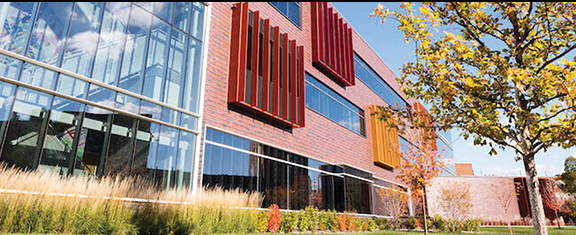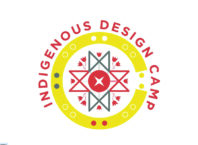
By Lee Egerstrom
Starting this fall with the 2022-23 school year, Native American students will have a first in the nation opportunity to receive full tuition scholarships at a private university.
Augsburg University announced in mid-February that it is starting an American Indian Recognition Full Tuition Program that will be available for U.S. and Canadian Native and First Nation students.
Unlike most Native-oriented scholarship programs that are usually not full tuition, the Augsburg program will be available to enrolled members of federally recognized American Indian tribes, Alaskan Native Village, or Canadian First Nation communities. More than that, it will also be available for direct descendants – children and grandchildren – of enrolled and tribally recognized members.
Native students like all other Americans can receive full tuition scholarships at private colleges and universities all across America. But these are for atypical students such as National Merit Scholars and others who bring special talents and status to the campus.
Augsburg President Paul Pribbenow told The Circle that Augsburg’s location in Minneapolis plays a role in the university’s commitment to Native and Indigenous students.
That includes recognizing “the land we inhabit was stewarded for generations by the Dakota and Ojibwe peoples; our proximity to the urban core of Native peoples in Minneapolis; our Lutheran Christian faith tradition that calls us to serve our neighbors, and our commitment to ensuring that all deserving students have the means to pursue a higher education to improve their lives and those of the communities from which they come,” he said.
Augsburg’s location in the Cedar-Riverside area of Minneapolis is close to the American Indian Cultural Corridor and the Minneapolis American Indian Center along Franklin Avenue. Those are cultural ties that Native students at Augsburg appreciate, said Robert Gould, vice president for Strategic Enrollment Management.
Gould said the Augsburg program was developed from listening to students. “They would stop by to talk to me, and tell me their experiences.” This listening to students focus, he said, “is where education is going but isn’t where it has been.”
There are numerous scholarship programs at colleges and universities that strive to bring diversity to campuses and classrooms. What makes Augsburg’s new program especially unique is that it is open to Indigenous people from outside Minnesota and includes Canada.
Most public university financial support programs across America are restricted to in-state residents. Most programs at private universities and colleges are not wide open for Indigenous people but rather are directed at students who meet targeted admission criteria.
With Augsburg’s new program, Minnesota educational institutions are emerging as a national leader, and probably the nation’s leader, for Indigenous educational access. There are important developments on multiple fronts that should open academic doors for Native students.
The University of Minnesota and its campuses announced in November it has started a Native American Promise Tuition Program for first-year and transfer students who are enrolled members of Minnesota’s 11 federally recognized tribes.
Starting this fall, students from families earning less than $75,000 a year will be eligible for a full tuition scholarship. Students from families with incomes up to $100,000 will have 90 percent of their tuition covered and 80 percent for incomes up to $125,000.
Given historical ties with government agencies and with Indian education, the University of Minnesota Morris campus has provided 6,000 tuition waivers to Minnesota Native students since 1960.
Augsburg’s Gould said he has been contacted by education officials from around the country and here in Minnesota who want to learn more about the Augsburg program. Minnesota State, the system that operates 37 public universities and colleges on 54 campuses, has several programs of assistance in place for Native students.
The Minnesota State system is the largest provider of higher education for Native students in Minnesota. Some of its enrolled students may well become tuition-free scholarship students at University of Minnesota campuses or at Augsburg.
Noelle Hawton, chief marketing and communications officer for Minnesota State, said there is no system-wide program intended mainly or exclusively for Native American students. However, Minnesota has programs at greatly assist Native students at the Minnesota State campuses.
One is a new program, the Minnesota Future Together grant program, called a “last-dollar-in, full tuition and fee grant program that is available for students at public and tribal institutions of higher education.
The Office of Higher Education (OHE) administers that program in addition to a special Minnesota Indian Scholarship program.
Minnesota State, meanwhile, has a special virtual transfer fair for all college students who may be considering transferring to one of the Minnesota State universities. March 22 is a specific day dedicated to a Tribal College Transfer Fair.
At Augsburg, President Pribbenow said the private university was already providing high levels of support to currently enrolled students. The initial financial aid budget increase will not be great for the full tuition scholarships.
“The new program will be folded into our institutional approach to awarding financial aid and also will be a priority for fundraising from alumni and friends..
“We are committed to increasing this support in the years ahead,” he said.
Eric Jolly, president of the St. Paul & Minnesota Foundation and a member of Augsburg’s Board of Regents, said in an announcement statement that the program “is groundbreaking among private universities nationwide.
“I hope this is just the first of many institutions designing creative and equitable paths to education for Native and First Nation people,” he said.
Augsburg is striving to make its financial support programs more visible to prospective students and their families.
Gould, the enrollment vice president, said he doesn’t expect a rush of new applicants this fall from the program.
There may be some increase with the start of a new school year this fall, he said. But more will come later when Indigenous students learn they don’t have to be a Minnesota resident to qualify for the financial aid.
“It’s a word-of-mouth effort” to get word to students still in high school, he said.
There is definitely room for Indigenous enrollment growth at Augsburg with its location in a multicultural neighborhood and close to the American Indian Cultural Corridor. Rachel Farris, director of public relations for Augsburg, said the university currently has 54 Native students enrolled. That represents just 2.8 percent of Augsburg’s undergraduate enrollment.
Rueben Kitto Stately, a senior from both the Red Lake and Santee Sioux Nations, said in the announcement that the culture of the campus was a big selling point for his going to Augsburg. And, he added, “This part of the south side (Minneapolis) is the most concentrated urban population in the whole country.”
As with most if not all financial aid programs across the nation, the Augsburg program requires applicants to fill out the Free Application for Federal Student Aid (FAFSA) forms each year. Students from families with less than $125,000 in annual incomes will qualify for free tuition after state and federal financial aid have been applied.
It will also cover 100 percent of tuition and fees above estimated family contributions for students from families with more than $125,000 in annual income.
Details and eligibility criteria can be found at Augsburg.edu/american-indian-recognition. The deadline to apply for fall enrollment is May 1 and Dec. 1 for next spring enrollment.






